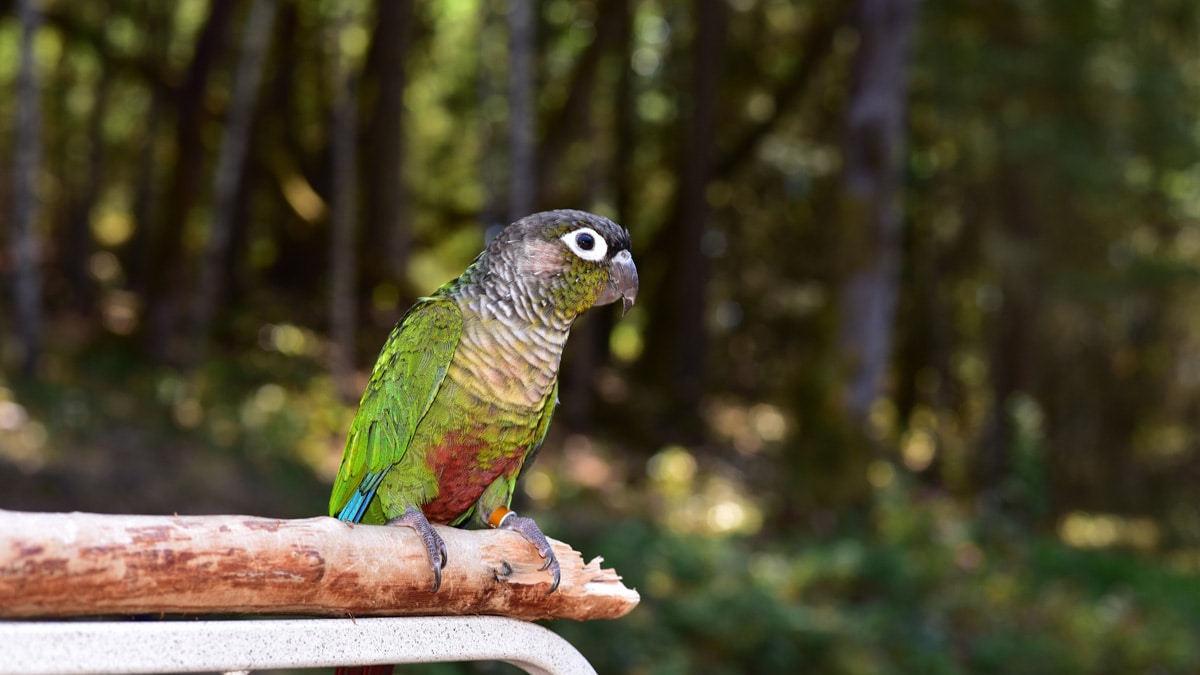Pineapple Green Cheek Conure
Pineapple green cheek conure belongs to the Subfamily of Arinae which is part of the long-tail parrot group. These birds are native to the forest of South America. This breed come after breeders mixed Online green cheek and cinnamon conure.
The pineapple green cheek conure has a very attractive appearance with a different color in its body. Some different colors in their head, Limegreen back feathers, yellow sides, and upper body has a mixture of yellowish and bright red wings.
The eyes of the Pineapple green cheek conure are red and ruby. The color of their tail is maroon and bright red. Pineapple green cheek conure very active, and intelligent parrot.
How Big Do Pineapple Green Cheek Conures get?
Pineapple green cheek conures males and females grow up to 10 inches, and their average weight is 60 to 80 grams.
They are small conure species and easy to carry and hold around, they are known to be great pets because of their color and size.
How Long Do Pineapple Green Cheek Conures Live?
Pineapple green cheek conure average lifespan of a Pineapple green cheek conure is 10 to 30 years. Lifespan depends on health, diet, and environment. The healthy Pineapple green cheek conures live up to 30 years.
It is observed that pet conures have longer life spans than wild parrots.
How Much Is a Pineapple Green Cheek Conure Price?
The average cost of a Pineapple green cheek conure cost is between $300 to $600. According to breeders, the price depends upon parrot species, size, age, health, gender, conure color, and area from which the parrot belongs. Trained and socialized parrots are more expensive.
Do Pineapple Green Cheek Conures Make Good Pets?
Pineapple green cheek conures are a good option for family pets. This parrot is known for their appearance and personality.
This breed of parrots has a very small and beautiful structure and they love to play with their owner there are some traits that make them good pets from
⦁ Pineapple Green Cheek conure enjoys being petted and handled.
⦁ They love to spend time with their owner.
⦁ They are active and intelligent.
⦁ They have comical nature.
Do Pineapple Green Cheek Conures Talk?
Pineapple Cheek conures are not typically good and sound-talking pets, they are usually quiet and don’t mimic sounds much. Their vocal sounds are loud and rough which makes it difficult for conures to talk.
They follow some easy human words and sounds. The ability to talk depends upon their age, training, their owner’s time, and effort.
Are Pineapple Green Cheek Conures Loud?
Pineapple green cheek conures are known for their loud, vocal calls. The conure’s call is a harsh, high-pitched sound that sounds like a screech. Their voice and screaming can be heard from far away and making them popular as pets.
They make lots of noise when they want to eat, drink, play, and vocalize during courtship displays. They are also very active compared to other types of conures making them a great pet for the household.
Are pineapple conures cuddly?
Are pineapple conures cuddly? Yes, they can be very cuddly when they get used to you and get lots of attention from humans. They are popular as pets, but some people question whether they are suitable for families with children.
Pineapple conures are not the best pet species for children because they can be quite loud and aggressive. However, if you’re looking for a bird that is easy to handle and doesn’t require much interaction, this might be the right choice.
What is the best conure to own?
We will discuss the best conure to own. Conures are a type of parrot that have color mutations, beautiful markings, and a variety of different sounds. There are some best conure to own
The best conure to own is the white eye conure because they are one of the most intelligent birds out there. They can learn tricks quickly, they love to talk and be around people, and they are very social birds that love to interact with their owners.
The Aratinga is a small conure that is native to South America. They are known for their social nature and can be very affectionate with their owners.
Patagonian Conure is a medium-sized, mostly green conure that originates from Argentina and Chile. They are known for their friendly personalities and colorful feathers.
What Do Pineapple Green Cheek Conures Eat?
Pineapple green cheek conures lifespan and health depend upon the diet of the parrot. We must feed our Pineapple green Conures a healthy, fresh, and balanced diet. Some diet that is good for Pineapple green cheek conures are
⦁ Nuts.
⦁ Seeds.
⦁ Fruits and vegetables.
⦁ pellets.
The favorite foods of Pineapple green cheek conures are broccoli, apple, carrot, beans, corn, etc.
What Foods Are Bad for Pineapple Green Cheek Conures?
Some foods never feed your Pineapple green cheek conures because they are toxic, and affect the health of the parrot. The following foods are listed below
⦁ Chocolate.
⦁ Sugar.
⦁ Human junk food.
⦁ Coffee.
⦁ Fried food.
⦁ Avocado
Differences Between Green Cheek vs. Maroon-Bellied Conure
Green cheek and Maroon-bellied conure are the same birds. But green cheek is better than the maroon-bellied conure. There are some differences between Green cheek and maroon-bellied conure that are
- The Green Cheek has a green head, throat, chest, and back while the Maroon-Bellied Conure has a maroon head, throat, chest, and back.
- Maroon bellied conure tail color is slightly maroon underneath, while the green cheek has dark maroon color underneath
- The green cheek is more friendly and Maroon bellied conure is ugly.
- Both birds are active but the green cheek is high energetic than the maroon bellied.
- Green cheek required a large cage to survive than the maroon-bellied conure.
- Pineapple Green cheeks are more common in captivity than maroon-bellied conure.




